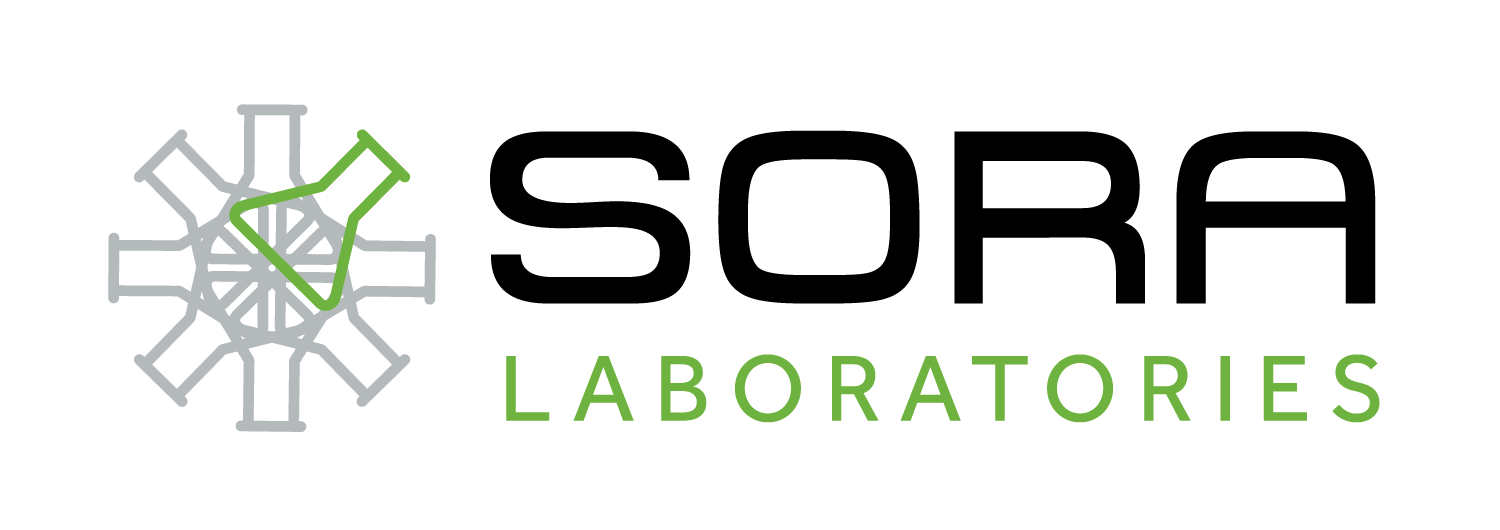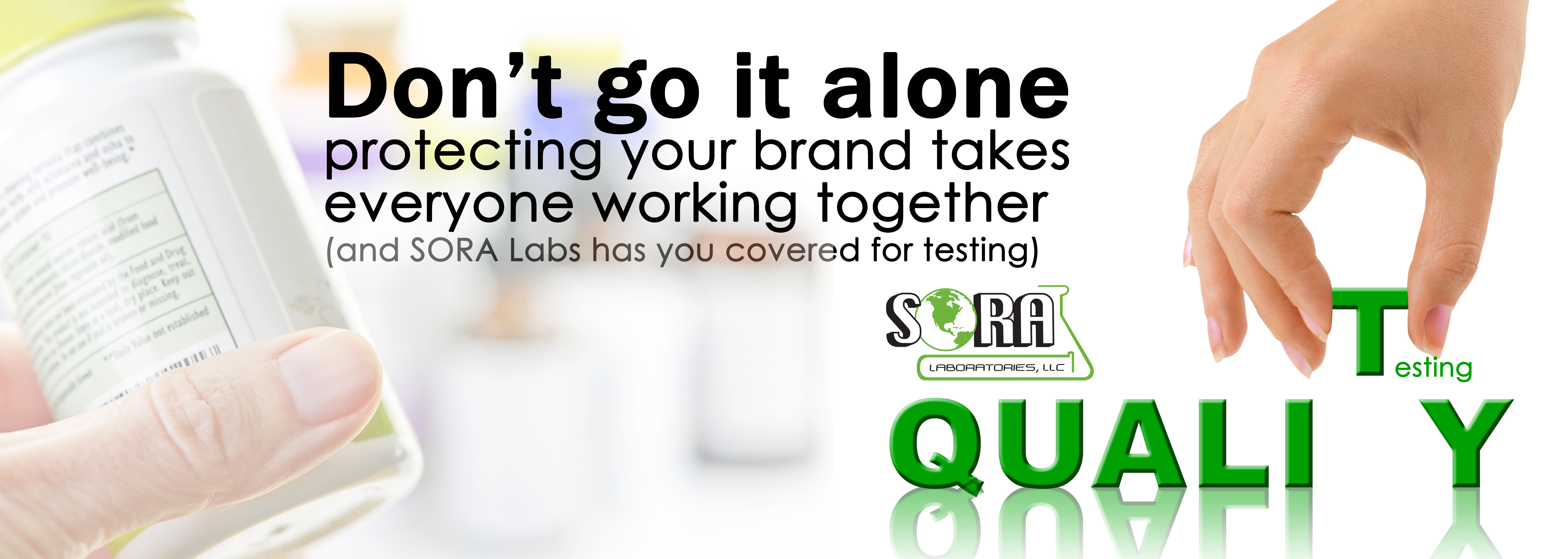For ingredient suppliers, contract manufacturers and brand owners, partnership with a testing lab is often a necessary component. Even with an in-house lab, a company may not be able to perform every test required for their products due to the extensive nature of various testing practices and methods. When complicated, cost prohibitive, or specialty methods are required, partnership with an experienced testing lab, makes perfect sense—enter specialty 3rd party testing labs like SORA Labs.
The FDA Code of Federal Regulations requires that a vendor be qualified, and just like any other vendor, labs should be questioned about the expertise of methods they run. Reviewing proficiency testing; requesting staff qualification and reviewing standard operating procedures (SOP), can provide valuable insight when evaluating a lab. Ultimately, an on-site audit is the best strategy when making a final determination of a lab’s worthiness. Another qualifier when choosing a lab is the ISO 17025:2005 accreditation from the International Organization of Standardization. This signifies that the lab has met stringent criteria and passed audits to be considered a high quality international testing lab.
A lab partnership should also include a Quality Agreement (QA), which defines responsibilities, methods, out-of-specification communication and more. As regulations are increasing, the industry continues to see more findings regarding quality control procedures. An in-place agreement will ensure the quality process has been defined for outsourced testing, and both companies understand each other’s roles and expectations. If a Quality Agreement has not yet been established, you can find our QA form here (Quality Agreement Form Request). Since ISO already requires the highest level of confidentiality, a Non-Disclosure Agreement (NDA) is less important than the Quality Agreement; however some companies choose to have both agreements in place.
Although you may not need outside testing services on a daily basis, it’s a smart idea to have a qualified and experienced lab in your corner when the need arises. Sometimes, it can take a team to get your project completed and partnering with a high-quality testing lab like SORA Labs, is a great place to start. Let us help you today!
You can’t go it alone—protecting your brand takes everyone working together!
The quality of the products under your brand is one of the most critical aspects of business success and vendor/supplier qualification is one of the most important steps in that process. In fact, this step is required in the Code of Federal Regulations (CFR) 111.75. Furthermore, to avoid warning letters, build confidence and maintain a positive reputation in the marketplace, safe and tested ingredients are a must.
CFR 111.75 outlines a very detailed process to follow. One of the first steps in establishing the reliability of the supplier’s certificate of analysis (CoA) is through confirmation of the supplier’s test results or examinations. This can be accomplished by setting the specifications and then testing using one or more methods for identity, purity, strength and composition of the component or ingredient. Also required by CFR 111.75 (c)(1), is testing for limits of contamination that would lead to adulteration of the finished product. This testing verifies that the vendor shows identity and acceptable levels of active ingredient markers. It also ensures that there is no microbial contamination, heavy metals, pesticide residue or other harmful contaminates.
Another key to supplier qualification is the supplier audit, which provides valuable information about the quality management system of the supplier. It also shows how the material is tested and how the vendor will ensure specification compliance from batch to batch, along with many other aspects of the company’s processes. By combining testing with supplier audits, a brand can consistently monitor the supplier and build confidence in its ability to produce high-quality ingredients. Once the supplier has been qualified, then reduced testing might be an option.
One FDA response letter (Addressed to Heron Botanicals Inc. on May 25, 2015) prompted the company to defend its position that it makes no claims to the amount of “active ingredients” in its finished product. As such, the company argued that testing was not needed for the “active ingredients” in the raw material. The FDA disagreed with this response because the company lists a 70 percent extract material on its label. Without testing the raw material, the company was unable to prove it started out with a 70 percent extract.
If this company had established a supplier qualification and showed testing results for the raw material over several lots to prove it met label claims repeatedly, then it may have been able to justify not testing the raw material “active ingredient” for this product. In this instance, the documented supplier qualification may have been all that was needed to avoid a warning letter.
Vendor qualification, although an often under-utilized process, is really the key to safe and high-quality ingredients. By testing raw materials and qualifying suppliers, this will strengthen the quality of your products and help protect your brand. Ultimately, It takes everyone working together to ensure the quality of the supply chain—and that definitely should be the main goal of any manufacturer. Are you doing your part to avoid FDA warning letters and produce quality products by working with a quality, certified and accredited testing lab? If not, SORA Labs can be your partner in quality!
Need an extra hand…or two?
Ever felt like you could use an extra hand or just needed an extra team member who could provide specialty services that you desperately need from time to time? SORA Labs wants to be a valuable extension of your quality control department. How can we do this for your team? By providing fast, reliable testing services that are available when you need them.
The FDA CFR 111 requires that a manufacturer establish product specifications for identity, purity, strength and composition for the limits of those types of contamination that may adulterate or that may lead to adulteration of the finished batch of the dietary supplement. To prove that the material is within specification, testing must be conducted.
Identity testing is the first step in verifying that you have the correct ingredient in your product.
Using compendia like the USP, FCC, BP or organizations that provide validated methods like the AOAC or ACS is a great place to start when determining your testing needs. Also, using reference standards to verify ingredient identity is also invaluable. The USP, for example, offers many testing recommendations such as:
- Gelatin testing- ID-A and ID-B are listed for standard gelatin and ID-C is listed for non-gelling ID. The USP lists specific tests and contamination testing recommendations for microbial and heavy metals.
- Ginkgo Extract- TLC ID and HPLC retention time peaks are listed for identification. Composition testing is for the active marker assays including Flavonol Glycosides and Terpene Lactones. The contaminate testing includes pesticides, residual solvents and microbial limits
- Wheat Bran- Microscopy is listed as the ID. Composition testing includes the amount of total dietary fiber and contaminate testing shows insect infestation and microbial limits.
- Biotin shows ID-A as FTIR; ID-B is Optical Rotation; and ID-C is HPLC retention time peaks. The assay uses HPLC and measures the active marker of Biotin.
- Papain is determined by a wet chemistry enzyme activity reaction with a UV-Vis end-point. There are some specific tests listed and the USP reference standard is noted.
Based on the wide variety of testing recommendations for just these few ingredients, it’s easy to understand the amount of equipment and expertise it takes to effectively test these products. Since setting up an analytical and microbiology testing lab requires a large capital investment and, for some companies, may be cost prohibitive, this is an excellent reason to use a quality third-party lab, such as SORA Labs. This gives us the opportunity to be that extra bit of help when you need it the most.
Another reason to use a qualified and accredited testing lab is to help avoid FDA warning letters like this recent one addressed to Pacific Nutritional. On April 15, 2016, the FDA wrote “Once you have established finished product specifications, you must verify that the specifications are met, as required by 21 CFR 111.75(c), and you must also ensure that the tests and examinations that you use to determine whether the specifications are met are appropriate, scientifically valid methods, as required by 21 CFR 111.75(h)(1). In addition, you must make and keep records in accordance with 21 CFR 111.95(b).”
From testing the initial raw material to the completed finished goods, SORA is here to help. As an ISO 9001:2008 certified and ISO 17025:2005 accredited testing lab, let us be a valuable part of your quality team!



